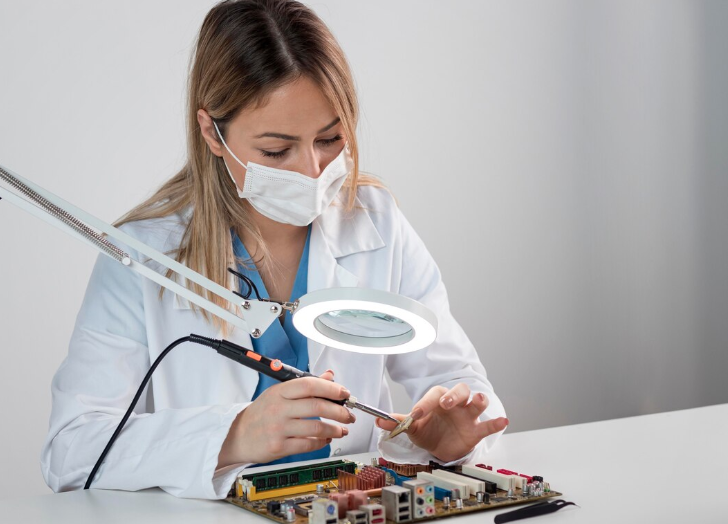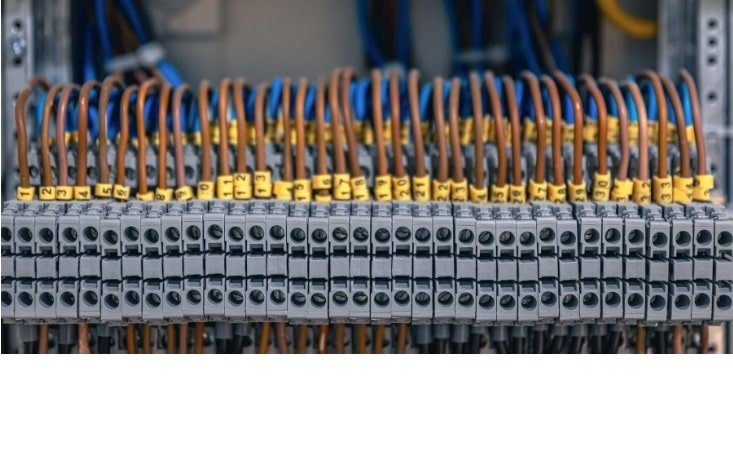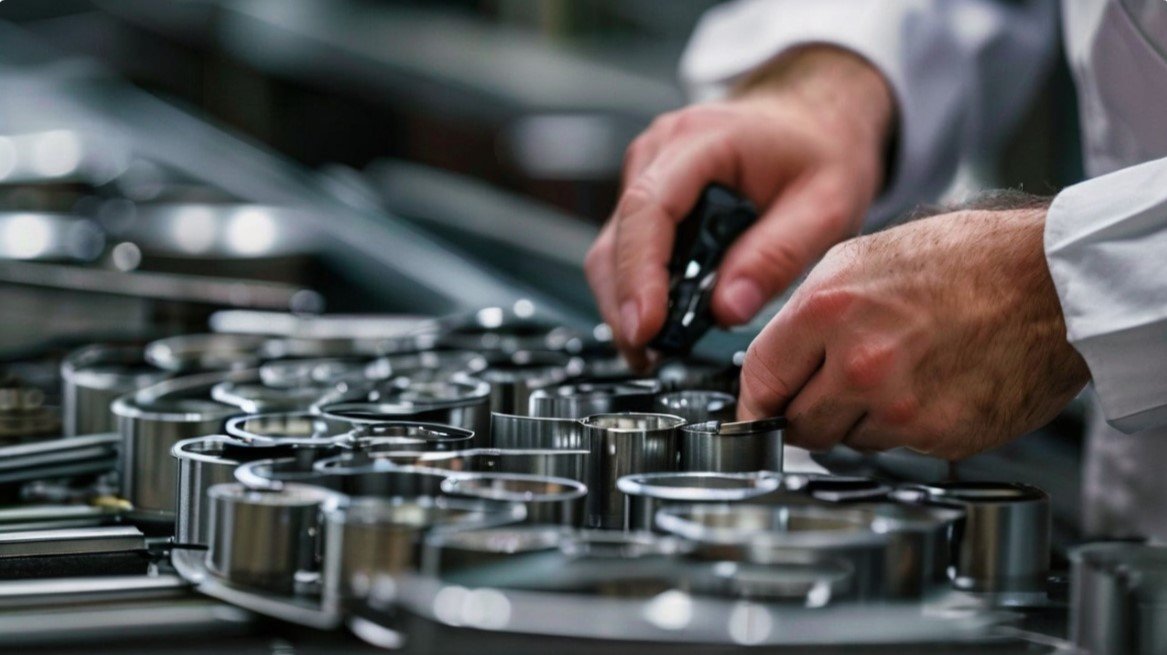Rhodium Plating Techniques | Advint Incorporated
The deposit of rhodium plating offers unmatched brilliance, durability, and versatility. This guide explores the advanced techniques and innovations in high-gloss white rhodium electrodeposition, examining its applications in jewelry and electronics manufacturing sectors. Whether you’re an experienced electroplater or simply curious, this paper offers valuable insights into rhodium plating.
Rhodium Plating Chemistry
A Precious Metal with Exceptional Properties
Rhodium (Rh), a member of the platinum group metals, boasts unique characteristics that make it ideal for electroplating:
- Atomic number: 45
- Atomic weight: 102.91 g/mol
- Density: 12.41 g/cm³
- Melting point: 1964°C (3567°F)
- Crystal structure: Face-centered cubic (FCC)
These properties contribute to rhodium’s exceptional hardness, corrosion resistance, and brilliant white luster.
The Electrochemical Process
Rhodium plating relies on the principles of electrodeposition. The basic reaction at the cathode can be represented as:
Rh³⁺ + 3e⁻ → Rh
This reduction process occurs in an electrolyte bath containing rhodium ions, typically in the form of rhodium sulfate (Rh₂(SO₄)₃), phosphate, or sulfamate compounds.
Rhodium Plating Bath Ingredients
- Rhodium Source: Typically Rh₂(SO₄)₃, Rh(PO₄), or Rh(SO₃NH₂)₃
- Acid Component: H₂SO₄, H₃PO₄, or NH₂SO₃H (10-200 g/L)
- Brightening Additives: Pyridine-3-sulfonic acid or naphthalene trisulfonic acid
- Whitening Agent: Alkyl group compounds
- Wetting Agent: Fluorosurfactants
- Whitening Agents
Recent breakthroughs have led to the development of new whitening agents. Examples include:
- An Organic sulfate compound
- An Organic sulfate ester
- An Alkyl sulfonate organic compound
These compounds significantly enhance the brightness and whiteness of rhodium coatings, allowing for thicker deposits without compromising the high-gloss finish.
Advanced Techniques
Pulse Electroplating
Pulse electroplating represents a significant advancement in rhodium deposition technology. This technique applies current in short bursts rather than continuously, offering several advantages:
- Improved deposit quality
- Crack-free coatings at greater thicknesses
- Increased current efficiency
The pulse waveform can be described by the following parameters:
- t_on: Pulse ON duration
- t_off: Pulse OFF duration
- i_p: Peak current density
By optimizing these parameters, electroplaters can achieve superior rhodium coatings with enhanced physical properties.
High-Speed Plating
For industrial applications requiring rapid throughput, high-speed rhodium plating techniques have been developed. These methods typically involve:
Increased rhodium concentration (up to 20 g/L Rh)
Higher current densities (5-10 A/dm²)
Specialized brightening agents for high-speed deposition
While these techniques can significantly reduce plating times, careful control of parameters is essential to maintain coating quality.
Applications
Jewelry and Luxury Goods
Rhodium plating has become indispensable in the jewelry industry, offering:
- Enhanced brilliance for white gold and silver
- Improved tarnish resistance
- Hypoallergenic properties for sensitive skin
- Electronics and Telecommunications
- Rhodium’s excellent conductivity and wear resistance make it ideal for:
- High-reliability electrical contacts
- RF connectors in telecommunications equipment
- Protective coatings for printed circuit boards (PCBs)
Challenges

Internal Residual Stress
Rhodium deposits are prone to internal residual stress, which can lead to cracking and peeling. Strategies to mitigate this include:
- Optimizing bath composition with stress-reducing additives
- Implementing pulse plating techniques
- Careful control of current density and temperature
- Reducing deposit thickness
- Thickness Limitations
Traditional rhodium baths often struggle to produce thick, bloom-free coatings. The latest advancements in whitening agents have pushed the boundaries:
- Conventional baths: 0.3 μm maximum bloom-free thickness
- Advanced formulations: Up to 0.7 μm bloom-free thickness
This improvement opens new possibilities for applications requiring thicker rhodium coatings without sacrificing appearance.
Cost Considerations
As a precious metal, rhodium’s price can fluctuate significantly. To optimize cost-effectiveness:
Implement efficient plating techniques to reduce material consumption
Consider selective plating for large components
Explore rhodium alloy plating for certain applications
Environmental and Safety Considerations
Waste Management
- Proper handling of rhodium-containing waste is crucial:
- Implement closed-loop recycling systems
- Use ion exchange techniques to recover rhodium from rinse waters
- Partner with certified precious metal refiners for waste processing
Worker Safety
- Ensure a safe working environment by:
- Providing proper personal protective equipment (PPE)
- Installing adequate ventilation systems
- Conducting regular safety training and audits
Conclusion
The combination of beauty, durability, and performance is unique in high-gloss white rhodium plating. Manufacturers can achieve rhodium coatings with exceptional brightness, whiteness, and thickness by utilizing advancements in bath chemistry, pulse plating techniques, and process optimization.
The ongoing advancements in rhodium plating technology hold the key to unlocking new opportunities in different sectors.
Rhodium’s brilliant luster will set new standards for quality and performance in metal finishing for next-generation electronics.
Rhodium plating opens a world of possibilities for jewelry designers, automotive engineers, and electronics manufacturers alike. To fully capitalize on the power of rhodium plating and impress your customers, it’s crucial to stay up to date with the latest advancements and best methods in this ever-changing industry.
You may like also
Pulse Aluminum Anodizing: A Dual-Purpose Solution for Energy Efficiency and Finish

Posted By:Venkat Raja
Aug 31, 2024
Tags:






